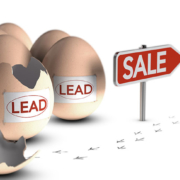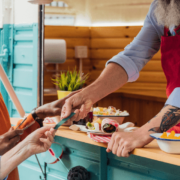How to Shorten the Sales Cycle: Tips for Marketing & Sales Teams
In a previous blog post, we discussed how senior living leads require many “touches” before buying—and that the sales cycle can be quite lengthy.
In fact, according to a white paper by Enquire Solutions, the sales cycle can range from 107 days (for memory care) to a whopping 400 days (for life plan communities). Assisted living and independent living fall in the middle at 145 days and 203 days, respectively.
Wondering how to shorten the sales cycle—or whether it’s even possible? Here’s our take.
Accept that the sales cycle is long, but don’t use it as an excuse.
Acceptance doesn’t mean giving in. What it does mean is having realistic expectations about your sales forecasts, conversions, and pipeline.
Yes, the sales cycle is long, especially for certain types of senior living, as noted above. But keep in mind that these numbers are averages. Benchmarking is good since it gives everyone a starting point, but that doesn’t mean you and your teams can’t beat the numbers.
✔ Experiment and measure results. Encourage your teams to experiment—with content, with emails, with in-person events, and with different senior living sales strategies. Keep close track of the results. If your team comes up with a marketing program or campaign that shortens the sales cycle, excellent! Do more of that.
✔ Always be ready (and willing) to pivot. Lots of things can influence the sales cycle—many of which are out of your control like inflation, a recession, or a pandemic (or all three at once). Even if you come up with a “winning” program that dramatically shortens the sales cycle, this program might not produce winning results forever (which is precisely why you need to measure and monitor results). Remain nimble.
✔ Remind prospects that “seeing is believing.” We have so many clients who say that the best way to convert people is by having them attend an in-person event that truly demonstrates what it would be like to live in the community. And the most successful in-person events usually involve food, like lunch. Offer those free lunches and see if that helps shorten the sales cycle.
Use lead scoring to segment leads.
Not every lead is ready to buy TODAY. Your job is to differentiate between marketing-qualified leads (MQLs) and sales-qualified leads (SQLs). Serve up the SQLs to the sales team since those leads have indicated sales-readiness. MQLs have future sales potential—someday. For now, however, they need nurturing, not pestering.
Segmenting and scoring leads will shorten the sales cycle since the sales team will only be focusing on SQLs rather than every lead that comes across the wire—and they’ll be converting more as a result.
Embrace progressive form fields.
Your website forms can be a treasure trove of information. The more you know about a lead, the better equipped you are to determine where the person is in their buying journey. The challenge, of course, is that no one likes answering a lengthy list of questions on a form.
What’s the solution? Progressive form fields.
As people engage with the content on your site, you can serve up different questions based on the answers they provided on other forms. This will help you better identify true SQLs—and the various subsets in each. For example, an adult child searching on behalf of her mom vs. an older adult searching for herself.
Have a smart strategy for managing third-party leads.
We’ve discussed the problems with third-party leads and lead aggregators. In short, third-party leads are shared among many communities, these leads historically have low conversion rates, and they’re expensive (just to name a few issues).
But we get it: Some sales teams might not be able to let these leads go. If that’s the case, you’re going to need a smart strategy to convert these leads faster using marketing automation technology.
Luckily for you, we’ve created a solution that can help. We call it Speed to the Lead. Thanks to an automated five-step lead nurturing workflow, this solution will help your community respond quickly to third-party leads, deliver brochures immediately, and encourage tour requests.
Always try to connect on a personal level.
People enjoy doing business with people that they like and trust—and that they feel gets them. Yes, it might require a little more effort on the sales rep’s part, but when trying to figure out how to shorten the sales cycle, getting personal could help shave off some days. “Oh, everyone there is so nice and really has gotten to know me . . . maybe this really would be a good move.”
Connecting on a personal level is just that—it’s personal. One-size-fits-all approaches won’t work. Some ways to develop your skills in this area . . .
✔ Get in the habit of offering meaningful tokens/gifts based on what you learned about the prospect during an inquiry. Did you learn they’re religious? Give them a small book of devotionals. Did you discover they’re a Green Bay Packers fan? Give them a pair of Packers socks. Did you discover they love gardening? Gather some clippings from the gardens within your community and deliver the bouquet to their home with a nice note that you’re thinking of them.
✔ Practice active listening. With passive listening, you’re simply going through the motions. Active listening, on the other hand, is just that—it’s active. This essential sales skill shows you’re demonstrating through your own nonverbal gestures and your thoughtful follow-up questions that you’re really paying attention to what the prospect is saying. You take notes—and you revisit those notes. You use those notes to guide and inform the next steps and subsequent interactions. Active listening shows your interest in the prospect as a person first rather than simply a potential sale.
✔ Make sure you connect with all decision-makers—and influencers. This is especially important if adult children are involved. Keep in mind that their worries and concerns will be different from their parents’ concerns.
Need help converting more leads to move-ins?
Get in touch if you’d like fresh eyes on your senior living marketing and sales strategies. We know the industry and what works to attract the right leads, nurture them over time, and convert them to move-ins faster.












